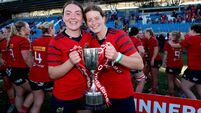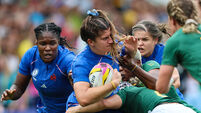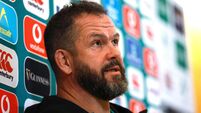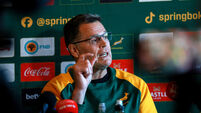A World Cup of haves and have-nots can raise the ceiling for all — Ireland included
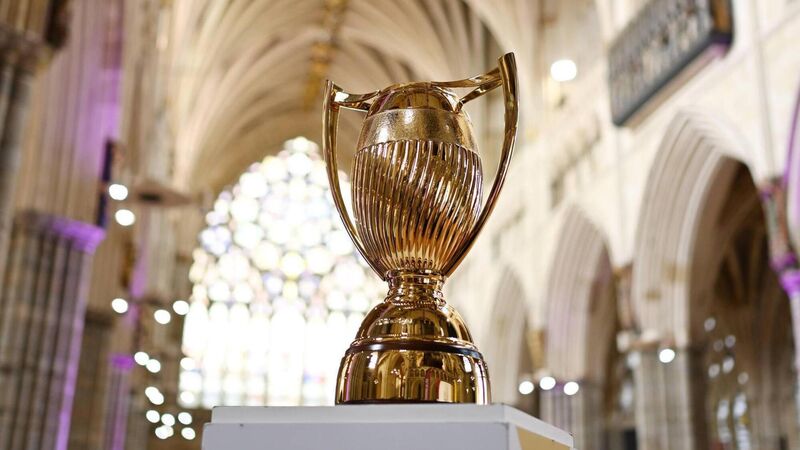
LET THE LIGHT IN: Detailed view of the Women's Rugby World Cup Trophy during the Women's Rugby World Cup opening ceremony at Exeter Cathedral, Exeter on August 16, 2025 in Exeter, England. Pic: Harry Trump - World Rugby/World Rugby via Getty Images
You can’t talk to Lynne Cantwell at the dawn of a World Cup and not ask about Marcoussis. It’s over a decade since she helped write history when a New Zealand national team was undone by an Irish equivalent for the first time.
That standout pool game outside Paris in 2014 marked the first loss for the Black Ferns at a global tournament since 1991, and it is a key piece in a project of memories that is being put together with the Irish Embassy in the UK.
Almost 200 Irish players, and counting, have banded together in an ex-players’ network in recent times, and it is through this that numerous photos and other bits and bobs tracing the road from there to here have been collected.
Cantwell has marvelled at how the basic quality of those pixelated images have improved with technology over time since Ireland’s first involvement in 1994, and in the mushrooming quantity of the media coverage as one tournament fed into another.
The latest Ireland crop was revealed to the world by the IRFU via a clever and nostalgic squad reveal online that juxtaposed snaps of their younger selves alongside images of them now. And then they were given a rollicking send-off at the Mansion House. That stuff didn't happen in the 90s.
“I'm delighted for them,” said the IRFU’s head of women’s strategy ahead of tonight’s opener between England and the USA. “We're all committed to just making sure that every World Cup is better than the one before. And I think this one's going to be massive.”
There can’t be any doubt that the game is going in the right direction. Marcoussis was, and still is, the training centre for the French federation. That was enough for what was needed at the time.
The venues in England will be state-of-the-art rugby and football stadia.
The estimate is that almost 400,000 people will flock to the eight grounds. The final is already a sellout, destined to be a record crowd for the women’s game, and organisers say they could have shovelled out three times as many tickets again.
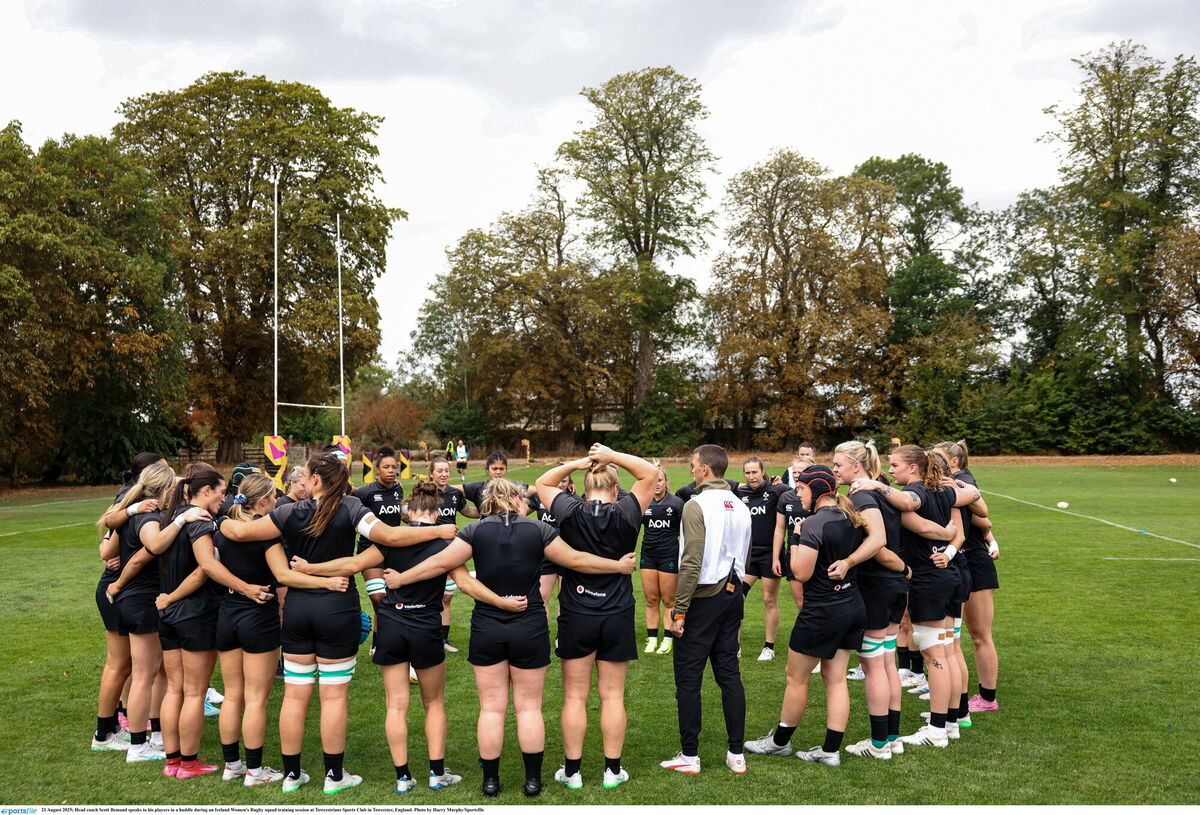
Plenty of this has to do with the hosts’ conviction that, after two successive decider losses to the Black Ferns, this is their time to convert routine dominance into a first title since 2014. And to ape football’s Lionesses in the Euros earlier this summer.
England have the most resources, in players and in pounds. They have an elite domestic competition in the PWR, a string of superb and experienced world-class operators, a brilliant coach in the Kiwi John Mitchell, and that home advantage. Only two teams can stop them.
New Zealand will expect to peak at the right time, again, having lost to England three times since that epic final in 2022. Canada are ranked second in the world, behind the Red Roses, and with a win and draw claimed in Christchurch in the last 14 months.
The field beyond that is splintered. France have regressed but are still on a mezzanine level of their own. Ireland head the 12-strong peloton that is striving to catch up. The question is how competitive that lengthy tail can be.
The average winning margin in the quarter-finals three years ago was over 36 points and the tournament has been expanded since from a dozen teams to 16. Brazil, at 25th, are the lowest-ranked team. There will be blowouts.
Still, it’s clear that teams have benefited from the advent of the three-tiered WXV competition and the extra games they offered, and that the calibre of coaches in the women’s game now is another factor in pushing standards along.
But the Samoans have had to raise funds for themselves individually and even the Canadian federation went cap in hand to the public to try and drum up CAN$1m for their tilt at this trophy. Many players on show are contracted, plenty still aren’t.
This remains a world and a World Cup of the haves and have-nots.
The men’s tournament has had similar issues in terms of resources and divergence in standards but the hope is that a tournament played in one of the game’s prime European markets can capture the imagination of an audience that is growing.
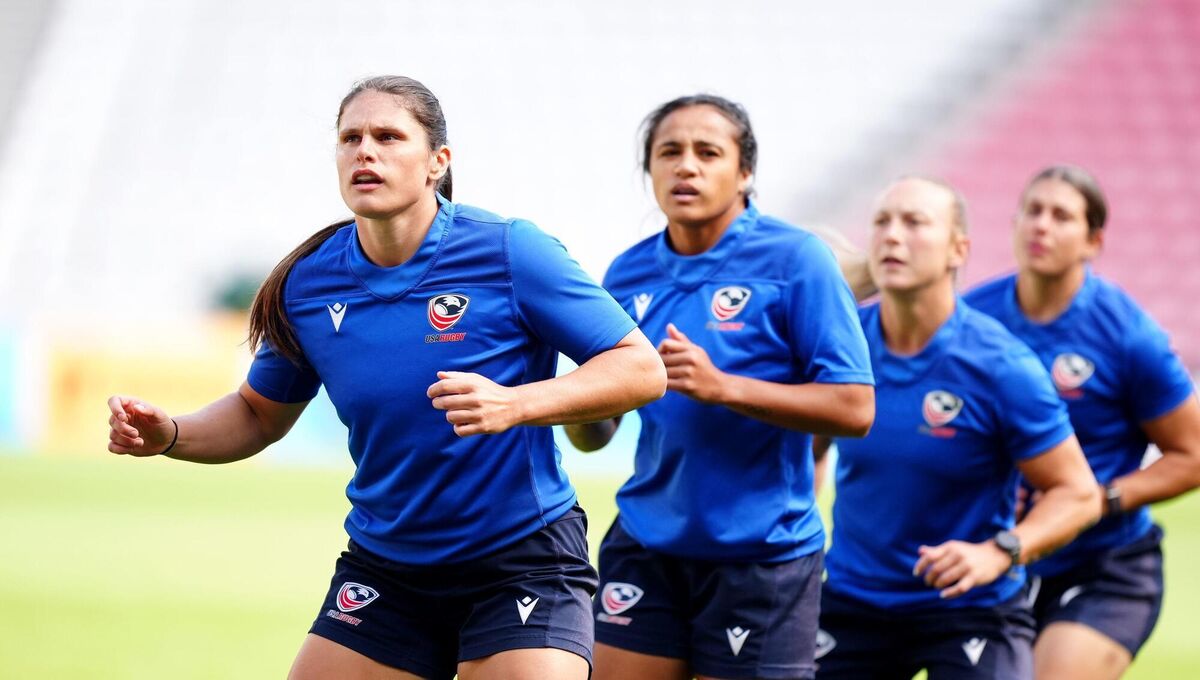
Organisers have dropped lines about connecting with “a whole new fanbase”, and how this is “a generational moment” for the women’s game. The USA’s Ilona Maher is already a star with 8.7m social followers. The Wallaroos’ social footprint is up 985% in 18 months.
“The story off-field is going to be about the visibility,” said Cantwell, “the marketing, the sponsors that have come on board to really elevate and lift to the max all the content that's being created from the players, the players' personalities that are coming out.”
An ambassador for Defender, the principal partner of this tournament, the Ireland legend could back that up by pointing to the billboards on our roads and the ads across all forms of media right now that feature members of Scott Bemand’s Ireland squad.
There’s no doubt about the potential reach island-wide. No less than 19 counties are represented in a squad that will contest Pool C and is hoping to achieve their aim of reaching London for the semi-final stages. That’s a good hook.
Still, a shop window is only as effective as the goods in store and Cantwell knows that all this is just castles in the sky stuff unless the IRFU and the other unions continue to provide more funds and better pathways and opportunities for girls and women to access the game.
Ireland’s players have embraced this wider context but the focus narrows from here. All that counts now is this minute, this hour and this Sunday when they bring eight years of an absence from this global stage to an end against Japan in Northampton.
Cantwell’s advice?
“This is not a fluke,” said the country’s most capped female player. “They've been producing it for the last 12 months. They've beaten New Zealand and they're on the crest of a wave. So it's exciting. You have to take every game one by one.
“You can get laden down by the nervousness around who you're playing and it being a World Cup, and a home World Cup, and all of that. Or you can get so excited by having no idea in what's possible for us. Let's go out there and just show people what we can do.”





